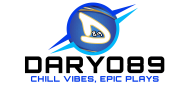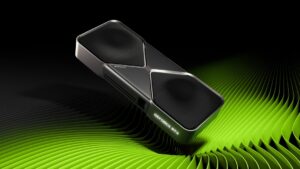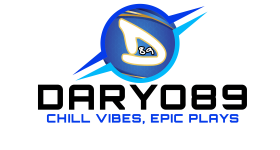Troubleshooting Common Gaming PC Bottlenecks: CPU vs. GPU vs. RAM
1. Introduction: The Quest for Smooth Gameplay – Understanding PC Bottlenecks
Achieving smooth, high-performance gameplay is a primary goal for PC gamers. However, performance issues like stuttering, low frame rates, or lag can disrupt the experience, often stemming from a “bottleneck” within the system. Understanding and addressing these bottlenecks is crucial for unlocking a gaming PC’s full potential.
Defining “Bottleneck” in the Gaming Context
In the context of PC performance, a bottleneck refers to a limitation where one hardware component restricts the potential performance of other components, preventing the system from achieving its maximum capability. It’s analogous to a traffic jam where a single slow vehicle impedes the flow of all others. This performance limitation arises from differences in the maximum capabilities of various components working together. When a bottleneck occurs, it typically means a core component, often the Central Processing Unit (CPU) or the Graphics Processing Unit (GPU), isn’t powerful enough to keep pace with the demands of the game or application being run, leading to noticeable performance degradation such as reduced frame rates or choppy gameplay. Importantly, bottlenecks are not necessarily caused by low-quality or old components but rather by an imbalance in their performance capabilities relative to each other and the specific task at hand. This issue isn’t exclusive to high-end systems; achieving hardware balance is equally vital for entry-level gaming PCs.
Why a Balanced System is Key for Peak Performance
A well-balanced PC is one where the hardware components are suitably matched for the intended workloads, such as gaming, and designed to minimize performance limitations. In a balanced system, components can operate closer to their designed performance levels without one piece of hardware significantly hindering others. This holistic approach to system building, considering how components interact rather than just focusing on the most expensive CPU or GPU, is critical for an optimal gaming experience. While bottlenecking is an inherent challenge due to the complex interplay between hardware , understanding how to identify and mitigate significant bottlenecks ensures that components work together harmoniously, delivering smoother gameplay and better overall system responsiveness.
It is important to recognize that bottlenecks are often dynamic and context-dependent. The component acting as the limiting factor can change based on the specific game being played, the chosen graphical settings and resolution, and even the particular scene or activity within the game. For instance, a system might be GPU-limited at 4K resolution but become CPU-limited at 1080p with the same hardware. Similarly, a graphically simple area might stress the GPU, while a complex city scene with many non-player characters (NPCs) might heavily tax the CPU. Consequently, diagnosing performance issues requires testing under the specific conditions where problems arise. Furthermore, achieving a “perfectly” balanced system where no component ever limits another is largely theoretical. Some degree of bottlenecking is almost always present and generally acceptable, provided it doesn’t cause disruptive issues like severe stuttering or prevent the system from meeting the user’s desired performance targets (e.g., maintaining a stable 60 frames per second). Troubleshooting should focus on identifying and resolving bottlenecks that demonstrably degrade the gaming experience.
2. The Core Trio: Understanding Your PC’s Key Gaming Components
Modern PC games rely heavily on the coordinated efforts of three primary hardware components: the CPU, the GPU, and RAM. Understanding their distinct roles is fundamental to diagnosing performance issues.
The Brain: CPU’s Role (Central Processing Unit)
The CPU serves as the computational core or ‘brain’ of the gaming PC, responsible for executing instructions and managing a wide array of tasks essential for gameplay. Its duties include processing game logic, running physics simulations, calculating Artificial Intelligence (AI) behavior for enemies and NPCs, managing game assets, handling audio processing, processing network code in online games, and tracking positional data. The CPU’s speed and efficiency directly influence frame rates, game loading times, and overall system responsiveness. It effectively crunches the numbers required to make the game world function.
A critical function of the CPU in the context of graphics is preparing rendering instructions, often called “draw calls,” for the GPU. These instructions contain all the necessary data—shaders, textures, object positions—that the GPU needs to render the visual scene. The CPU essentially feeds data to the GPU, enabling it to create the images displayed on the monitor. The performance impact of the CPU can be more pronounced in specific game genres that are inherently calculation-heavy, such as real-time strategy (RTS) games involving thousands of units (like Total War ), large-scale simulations, massively multiplayer online games (MMOs) with high player counts, and open-world titles featuring complex environments and numerous NPCs. Modern games increasingly utilize multiple CPU cores for tasks like AI and physics, making higher core counts beneficial, while high clock speeds remain crucial for tasks that cannot be easily parallelized and for overall instruction execution speed.
The Artist: GPU’s Role (Graphics Processing Unit)
The GPU is a specialized processor primarily designed to accelerate the rendering of graphics. It acts as the system’s artist, responsible for creating the visual experience by processing and rendering images, animations, and video. Its tasks include processing complex textures, calculating lighting effects, rendering shadows and reflections, handling shaders, managing particle effects, and ultimately outputting the final frames to the display. The GPU translates the complex data and instructions received from the CPU into the pixels seen on screen.
The GPU’s power directly dictates the achievable frame rates (FPS), the resolution at which games can be smoothly played (e.g., 1080p, 1440p, 4K), and the level of visual quality settings that can be enabled. A more powerful GPU can render complex scenes faster, resulting in smoother gameplay (higher FPS) and allowing the use of demanding graphical features like high-resolution textures, intricate shadows, anti-aliasing, and advanced techniques such as real-time ray tracing or utilizing upscaling technologies like DLSS, FSR, and XeSS. GPUs achieve this through massively parallel processing, utilizing thousands of smaller cores designed to handle many graphical calculations simultaneously. GPUs also feature their own dedicated high-speed memory, known as VRAM (Video RAM), used to store textures, frame buffers, and other graphical assets needed for immediate rendering.
The Workspace: RAM’s Role (Random Access Memory)
RAM functions as the system’s high-speed, short-term workspace. It’s volatile memory, meaning it temporarily stores data that the CPU and GPU need to access quickly while the system is powered on, but this data is cleared upon reboot. This includes currently active game assets (like textures, character models, sound files, level data), operating system files, and data from other applications running in the background.
The key advantage of RAM is its speed; it allows the CPU and GPU to read and write necessary data orders of magnitude faster than retrieving it from permanent storage devices like Hard Disk Drives (HDDs) or Solid-State Drives (SSDs). Having sufficient RAM capacity (the amount, measured in Gigabytes or GB) and adequate RAM speed is crucial for a smooth gaming experience. Enough fast RAM allows more game data to be pre-loaded and readily available, reducing the need for the CPU to constantly pull data from slower storage, which can cause performance hiccups like stuttering or hitching, particularly when loading new areas or during intense action sequences. Sufficient RAM also facilitates multitasking, allowing gamers to run background applications like Discord, web browsers, or streaming software without negatively impacting game performance.
The interaction between these three components is critical. The CPU and GPU operate in a producer-consumer relationship for rendering frames: the CPU prepares and sends instructions, and the GPU consumes these instructions to create the visuals. A bottleneck arises when one component significantly outpaces the other. If the GPU renders frames faster than the CPU can supply the instructions, the GPU will sit idle, resulting in a CPU bottleneck. Conversely, if the CPU sends instructions faster than the GPU can process them, the CPU’s potential is limited by the GPU’s rendering speed, causing a GPU bottleneck.
RAM plays a vital role as the high-speed intermediary or staging area between the CPU/GPU and the much slower permanent storage. When the system lacks sufficient RAM capacity or speed, it’s forced to rely more heavily on the storage drive by using the page file (virtual memory). Because storage drives are significantly slower than RAM , this frequent swapping of data between RAM and storage directly causes performance issues like stuttering, hitching, or freezing, even if the CPU and GPU themselves are theoretically capable. Thus, inadequate RAM can actively inhibit performance, acting as a bottleneck in its own right.
3. Signs of Trouble: Identifying Bottleneck Symptoms
Recognizing the specific symptoms associated with each type of bottleneck is the first step towards diagnosis. While some symptoms like stuttering can overlap, the accompanying performance characteristics often point towards the likely culprit.
Is Your CPU Holding Things Back? (CPU Bottleneck Symptoms)
A CPU bottleneck occurs when the processor cannot prepare data or instructions fast enough for the GPU, limiting overall performance. Common indicators include:
- Low GPU Utilization: This is often the clearest sign. During demanding gameplay, the GPU usage percentage remains significantly below its potential (e.g., consistently under 95%, sometimes dipping below 80% or even 50%), while CPU usage, particularly on one or more cores, is high or maxed out (100%). The GPU is essentially waiting for the CPU.
- Inconsistent Frame Rates & Stuttering: Gameplay may suffer from noticeable stuttering, lag, hitching, or sudden, sharp drops in FPS. This is often more pronounced in complex scenes involving numerous NPCs, intensive physics calculations, or large numbers of players in online games. Frame times (the time taken to render each frame) might be high or fluctuate erratically, leading to poor 1% and 0.1% low FPS figures, which represent the tail end of performance dips.
- Poor Performance in CPU-Intensive Games: The system may struggle specifically in game genres known to heavily rely on the CPU, such as RTS, large-scale simulations, open-world titles with high population density, or certain online multiplayer games.
- Minimal FPS Gain When Lowering GPU Settings: Reducing graphics settings that primarily load the GPU (like resolution, texture quality, anti-aliasing) yields little to no improvement in frame rate. This occurs because the CPU’s processing speed, not the GPU’s rendering capability, is the limiting factor.
Is Your GPU Maxed Out? (GPU Bottleneck Symptoms)
A GPU bottleneck happens when the graphics card is the limiting factor, unable to render frames as quickly as the CPU can prepare them. Symptoms typically include:
- High GPU Utilization: The GPU usage percentage consistently stays at or very near 100% during gameplay. This indicates the GPU is working at its maximum capacity.
- Low Frame Rates: The overall FPS is lower than desired or expected for the hardware configuration, especially at higher resolutions or graphics settings.
- Significant FPS Gain When Lowering Graphics/Resolution: Reducing the game’s resolution or dialing back GPU-intensive settings (e.g., textures, shadows, anti-aliasing, ray tracing) results in a noticeable increase in FPS. This confirms the GPU was the limiting factor at the higher settings.
- Sluggish Graphics Rendering: The system may exhibit general sluggishness in graphically demanding tasks, such as rendering 3D models or handling complex visual effects. In some cases, users might observe textures loading slowly (“pop-in”) or temporarily disappearing.
Is Your RAM Running Dry (or Too Slow)? (RAM Bottleneck Symptoms)
RAM bottlenecks can arise from insufficient capacity (not enough GB) or inadequate speed/timings. Symptoms include:
- Stuttering, Hitching, Freezing: Frequent and noticeable pauses, stutters, or momentary freezes during gameplay are common signs. These often occur when transitioning between game areas, during intense action sequences involving many assets, or seemingly randomly as the system struggles to manage memory. This stuttering can happen even if the average FPS appears high.
- Long Loading Times: Games, levels, or assets take an unusually long time to load. While storage drive speed (SSD vs. HDD) is a primary factor here, insufficient RAM can exacerbate loading issues as data needs to be swapped more frequently.
- Game Crashes & System Instability: Frequent crashes to the desktop, sometimes accompanied by “out of memory” errors, or general system unresponsiveness can point to insufficient RAM.
- High RAM Usage: Monitoring tools consistently show RAM usage near or at 100% while gaming, especially if multiple background applications are also running.
- High Disk Usage (Page File Activity): The Windows Task Manager might show unusually high activity for the disk drive where the operating system is installed. This often indicates that the system is frequently accessing the page file (virtual memory) on the storage drive because physical RAM is full. This heavy reliance on slower virtual memory is a strong indicator of a RAM capacity bottleneck and directly contributes to stuttering.
- Impact of RAM Speed/Timings/Profiles: Even if the system has enough RAM capacity, performance issues can arise if the RAM is too slow or not configured optimally. RAM running at default JEDEC speeds instead of its faster XMP, DOCP, or EXPO profile speeds can lead to stuttering, reduced CPU efficiency, and lower minimum frame rates (poor 1% lows).
It’s noteworthy that stuttering is a symptom potentially linked to all three bottleneck types. However, the context is key for differentiation. CPU-related stutter often coincides with low GPU utilization and occurs during CPU-heavy moments. RAM-related stutter frequently happens during asset loading or transitions between areas and correlates with high RAM usage or page file activity. GPU limitations typically manifest as consistently low FPS that improves when lowering settings, although severe limitations might also cause stutter. Therefore, observing when stutter occurs and checking relevant performance metrics simultaneously is crucial for accurate diagnosis. Identifying RAM bottlenecks can sometimes be trickier than CPU/GPU issues if users only focus on CPU/GPU utilization, as RAM problems often manifest through high memory usage, page file activity, or specific frame time spikes rather than a simple CPU/GPU load imbalance.
The following table provides a quick reference for common bottleneck symptoms:
Table 1: Bottleneck Symptom Quick Reference
| Symptom | Likely CPU Bottleneck | Likely GPU Bottleneck | Likely RAM Bottleneck |
|---|---|---|---|
| GPU Utilization | Low (<95-100%) | High (99-100%) | Can vary; not the primary indicator |
| CPU Utilization | High (Overall or Per-Core) | Can vary; often lower if GPU is maxed | Can vary; not the primary indicator |
| FPS Behavior (Lowering Graphics/Resolution) | Minimal FPS increase | Significant FPS increase | Minimal FPS increase (unless RAM speed is the issue) |
| Stuttering/Hitching Type | In CPU-heavy scenes/tasks | Less common; primarily low FPS | During asset loading, new areas, intense action |
| Loading Times | Generally unaffected | Generally unaffected | Potentially long (Storage speed also key) |
| Crashes | Possible with severe bottlenecks | Possible with severe bottlenecks/VRAM issues | More likely (“Out of Memory” errors) |
| High RAM Usage (%) | Not directly indicated | Not directly indicated | Yes (near 100%) |
| High Disk Activity (Page File) | Not directly indicated | Not directly indicated | Yes (indicates RAM swapping) |
4. Playing Detective: Tools and Techniques for Diagnosing Bottlenecks
Identifying the specific bottleneck requires monitoring system performance during gameplay. Several tools and techniques can help gamers pinpoint the limiting component.
Basic Check: Windows Task Manager (Performance Tab)
The built-in Windows Task Manager offers a quick first look at system resource usage.
- Access: Press
Ctrl+Shift+Escand select the “Performance” tab. - Monitoring: Provides real-time graphs showing overall utilization for CPU, Memory (RAM), Disk, and GPU.
- Interpretation: This tool is useful for spotting obvious issues at a glance. Consistently high utilization (near 100%) for the CPU or Memory during gameplay, or high Disk activity (which can imply heavy page file usage due to insufficient RAM), might indicate a problem area. It can also reveal if background applications are consuming excessive RAM before a game is even launched. However, Task Manager lacks the detailed per-core CPU breakdown and in-game overlay capabilities needed for definitive bottleneck diagnosis during actual gameplay.
In-Depth Analysis: Dedicated Monitoring Software
For accurate diagnosis while gaming, dedicated monitoring tools with On-Screen Display (OSD) capabilities are essential. These tools show detailed performance metrics overlaid directly onto the game screen.
- MSI Afterburner + RivaTuner Statistics Server (RTSS): This is a widely used and powerful combination for in-game monitoring.
- Setup: Requires installing both MSI Afterburner and the bundled RTSS. Within Afterburner’s settings (Monitoring tab), users select the metrics they wish to track (e.g., GPU Usage, CPU Usage per core, Frame Rate, Frame Time, RAM Usage) and check the “Show in On-Screen Display” box for each desired metric. RTSS is then used to configure the appearance and position of the OSD overlay (size, color, corner of the screen). It’s crucial to have Afterburner running before launching the game for the overlay to appear.
- Key Metrics: Essential metrics to enable include: GPU Usage (%), GPU Clock Speed (MHz), VRAM Usage (MB/GB), GPU Temperature (°C), CPU Usage (Overall %), CPU Usage (Per Core %), CPU Clock Speed (MHz), CPU Temperature (°C), RAM Usage (MB/GB), Frame Rate (FPS), and critically, Frame Time (ms). Monitoring 1% and 0.1% Low FPS values can also be very insightful.
- Interpretation:
- CPU vs. GPU Usage: The core diagnostic principle applies: If CPU Usage (overall or, more importantly, on individual cores) is high while GPU Usage is significantly below 100%, it points to a CPU bottleneck. If GPU Usage is pegged at 99-100%, the GPU is the bottleneck. Remember that high GPU usage is often desirable if performance targets are met, as it means the hardware is being fully utilized.
- RAM Usage: Track how close the reported RAM usage gets to the total installed system RAM. Consistently high usage suggests a potential capacity bottleneck.
- VRAM Usage: Compare the VRAM usage reported by Afterburner to the GPU’s total VRAM capacity. Exceeding this capacity forces the system to use slower system RAM or even storage, causing severe performance degradation and stuttering.
- Temperatures: Monitor CPU and GPU temperatures under load. Abnormally high temperatures (e.g., CPU consistently over 90°C, GPU over 85-90°C, depending on the specific chip) might indicate thermal throttling, where the component automatically reduces its clock speed (and thus performance) to prevent overheating. This throttling can mimic a component bottleneck.
- Clock Speeds: Check if the CPU and GPU are maintaining their expected boost clock speeds during gameplay. Clock speeds dropping significantly below expected levels under load can also be a sign of thermal throttling or potentially insufficient power delivery.
- HWMonitor / HWiNFO: These utilities provide extremely detailed sensor readings for nearly every component in the system. They are excellent for in-depth hardware monitoring, logging data over time (HWiNFO can log to a CSV file for later analysis ), and identifying specific issues like thermal limits being reached or voltage fluctuations. Note that occasionally, certain sensor polling (especially problematic EC sensors reported with HWiNFO) can itself introduce periodic stutter, so users should be aware of potential conflicts.
- Decoding Frame Time Graphs: The frame time graph, typically displayed by RTSS alongside FPS, is invaluable for diagnosing stutter.
- Understanding Frame Time: Measured in milliseconds (ms), it represents the time taken to render each individual frame. A lower and more consistent frame time is better (e.g., 60 FPS corresponds to a consistent 16.67ms frame time).
- Reading the Graph: A smooth, relatively flat line on the frame time graph indicates consistent frame delivery and smooth gameplay. Spikes (sudden, sharp increases in milliseconds) directly correspond to the stutters or hitches perceived by the player. A generally high or erratic line, even without huge spikes, indicates inconsistent performance.
- Linking Frame Times to Bottlenecks: CPU bottlenecks often manifest as generally higher or more erratic frame times and poor 1% low FPS values. RAM bottlenecks, particularly those caused by insufficient capacity or speed forcing data swapping, frequently show up as large, sudden spikes in the frame time graph, corresponding to moments of hitching or freezing as assets are loaded or retrieved from the page file. A severe GPU bottleneck results in consistently high frame times across the board, translating directly to low average FPS.
Repeatable Testing: Using In-Game Benchmarks
Some games include built-in benchmark modes that run a standardized sequence, providing repeatable performance metrics like average, minimum, and maximum FPS. These are useful for objectively measuring the performance impact of changing settings, updating drivers, or applying potential fixes. Running the benchmark before and after a change allows for direct comparison. Results can also sometimes be compared against online databases for similar hardware configurations.
Practical Testing: Experimenting with Game Settings
A crucial diagnostic technique involves systematically adjusting specific in-game graphics settings while monitoring performance metrics with tools like MSI Afterburner.
- Isolating CPU Load: Identify settings known to primarily stress the CPU, such as crowd or NPC density, physics detail level, object draw distance, and sometimes certain shadow or reflection implementations. Lowering these settings should improve performance and potentially increase GPU utilization if the system was previously CPU-bottlenecked.
- Isolating GPU Load: Identify settings that heavily tax the GPU, including resolution, texture quality, anti-aliasing methods, shadow map resolution, lighting quality, ambient occlusion, and ray tracing effects. Lowering these settings should significantly increase FPS if the system was GPU-bottlenecked.
- Observing the Outcome: The key is to observe the change in both FPS and component utilization. If lowering GPU-bound settings drastically increases FPS while GPU usage remains high (near 100%), it strongly confirms a GPU bottleneck. Conversely, if lowering GPU-bound settings results in little or no FPS gain, and GPU utilization drops significantly (while CPU usage remains high), it points clearly to a CPU bottleneck.
The necessity of using in-game, real-time monitoring cannot be overstated. Static benchmarks or basic Task Manager checks often fail to capture the dynamic nature of bottlenecks that occur under specific gameplay conditions. Tools like MSI Afterburner with RTSS provide the necessary granularity, including per-core CPU usage and frame time data, which are critical for differentiating stutter causes and understanding the true performance limitations as they happen.
Furthermore, interpreting this data requires looking at the relative performance between components, not just isolated numbers. High CPU usage is only indicative of a bottleneck if the GPU is simultaneously underutilized. Conversely, high GPU usage is generally the goal, indicating the graphics card is being fully leveraged. The diagnosis hinges on understanding this interplay. Finally, monitoring temperatures is crucial because thermal throttling—where a component slows down due to excessive heat—can produce symptoms identical to a hardware bottleneck. Checking if performance drops coincide with high temperatures or reduced clock speeds helps rule out overheating as the root cause before concluding a component is simply insufficient.
The following table summarizes the primary diagnostic tools and their uses:
Table 2: Diagnostic Tools & Key Metrics
| Tool | Primary Use | Key Metrics to Watch | Interpretation Notes |
|---|---|---|---|
| Task Manager | Quick overview of system resource usage | Overall CPU %, Memory %, Disk %, GPU % | Good for spotting major resource hogs or high background usage. Lacks in-game detail. High Disk % may imply page file use (RAM issue). |
| MSI Afterburner + RTSS | Detailed real-time, in-game performance overlay | GPU Usage %, CPU Usage % (Overall & Per-Core), RAM Usage, VRAM Usage, Temps (°C), Clocks (MHz), FPS, Frame Time (ms) | Essential for live diagnosis. Compare CPU/GPU usage for bottlenecks. Frame time graph diagnoses stutter. Monitor temps for throttling. |
| HWiNFO / HWMonitor | Detailed sensor logging & hardware monitoring | Temps, Voltages, Clock Speeds, Power Limits, Utilization, Thermal Throttling flags | Useful for deep dives, logging data, identifying specific hardware limits or thermal issues. Can sometimes conflict with games. |
| In-Game Benchmarks | Repeatable performance measurement | Average FPS, Minimum FPS (1% / 0.1% Lows) | Good for A/B testing changes (settings, drivers). Compare results to baseline or online benchmarks. |
| Settings Experimentation | Isolating impact of specific game options | FPS, Frame Times, CPU/GPU Utilization changes | Lowering CPU-heavy settings helps CPU bottleneck. Lowering GPU-heavy settings helps GPU bottleneck. |
5. Breaking the Bottleneck: Solutions and Mitigation Strategies
Once the primary bottleneck has been identified, several strategies can be employed to alleviate the limitation and improve gaming performance. Solutions range from simple software adjustments to hardware upgrades.
Addressing a CPU Bottleneck
If the CPU is determined to be the bottleneck, the goal is to either reduce the CPU’s workload or increase its processing capability.
- Software Tweaks:
- Lower CPU-Intensive Game Settings: Within the game’s graphics or gameplay options, reducing settings that heavily rely on the CPU can provide relief. Common examples include crowd or NPC density, level of detail (LOD) or draw distance, physics simulation quality, and sometimes specific shadow or reflection settings. Experimentation is key, as the impact varies per game.
- Close Background Applications: Ensure that non-essential programs are closed before launching a game. Web browsers (especially with numerous tabs), streaming clients, software updaters, cloud sync services, and other background processes can consume significant CPU cycles. Use Task Manager (Ctrl+Shift+Esc) to identify and end unnecessary tasks. Disabling unnecessary startup programs via the Task Manager’s “Startup apps” tab or using
MSConfigfor services can also help prevent them from running. Windows’ “Efficiency Mode” can sometimes be applied to heavy background processes via Task Manager to limit their resource usage. - System Updates & Power Plan: Keeping Windows, chipset drivers, and graphics drivers updated is recommended, as optimizations may improve efficiency. Ensure the Windows power plan is set to “Balanced” or “High Performance” to avoid the OS artificially limiting CPU speed.
- Game API Selection: If a game offers multiple graphics APIs (Application Programming Interfaces) like DirectX 11, DirectX 12, or Vulkan, testing different options might yield better CPU performance. Newer APIs like DX12 and Vulkan are often designed to distribute workload across CPU cores more effectively than older APIs like DX11, potentially reducing CPU bottlenecks in some scenarios.
- Hardware Tweaks:
- CPU Overclocking: For users with an “unlocked” CPU (e.g., Intel K-series, most AMD Ryzen CPUs) and a motherboard chipset that supports overclocking (e.g., Intel Z-series, AMD B/X-series), manually increasing the CPU’s operating frequency (clock speed) can boost performance. This requires careful adjustment of frequencies and voltages in the BIOS/UEFI and necessitates a capable cooling solution to handle the increased heat output. Overclocking carries risks, including system instability or potential hardware damage if done improperly, and performance gains might be modest (e.g., under 5%) on modern CPUs.
- CPU Upgrade: Replacing the existing CPU with a newer, more powerful model is often the most effective long-term solution for a persistent CPU bottleneck. This requires careful consideration of compatibility with the existing motherboard’s socket and chipset. A significant CPU upgrade might necessitate purchasing a new motherboard and potentially new RAM (e.g., moving from a platform using DDR4 to one requiring DDR5). Researching gaming benchmarks for potential CPU upgrades is advised.
- Improve CPU Cooling: If diagnosis revealed thermal throttling (high temperatures causing reduced performance), upgrading the CPU cooler to a more capable air cooler or an All-In-One (AIO) liquid cooler can allow the CPU to maintain its maximum boost clocks under load. Ensuring good case airflow and reapplying thermal paste between the CPU and cooler can also help manage temperatures.
Addressing a GPU Bottleneck
When the GPU is the limiting factor, solutions focus on reducing the graphical workload or increasing the GPU’s rendering power.
- Software Tweaks:
- Lower Graphics Settings: This is the most direct approach. Reduce settings known to heavily impact the GPU, such as display resolution, texture quality, shadow detail, anti-aliasing level, ambient occlusion, volumetric effects, and particularly demanding features like ray tracing. Users should prioritize which settings to lower based on their visual preferences versus the performance gained.
- Utilize Upscaling Technologies: If the game and GPU support them, enable NVIDIA DLSS (Deep Learning Super Sampling), AMD FSR (FidelityFX Super Resolution), or Intel XeSS (Xe Super Sampling). These technologies render the game internally at a lower resolution and then intelligently upscale the image to the target display resolution, often providing a substantial FPS boost with relatively minor impact on image quality, especially when using “Quality” or “Balanced” presets. Frame Generation techniques (available with DLSS 3 and FSR 3 on supported hardware) can further increase perceived frame rates but may introduce additional input latency or visual artifacts. Note that while primarily alleviating GPU load, upscaling can sometimes slightly increase CPU load.
- Update GPU Drivers: Graphics card manufacturers frequently release driver updates that include performance optimizations for new and existing games. Performing a clean driver installation using a tool like Display Driver Uninstaller (DDU) can resolve issues caused by corrupted driver files.
- VSync/Adaptive Sync: Enabling VSync can cap the frame rate to the monitor’s refresh rate, which might make gameplay feel smoother if the GPU was struggling to maintain a much higher, unstable frame rate, but it can introduce input lag. Technologies like NVIDIA G-Sync or AMD FreeSync (Adaptive Sync) are generally preferred as they synchronize the monitor’s refresh rate to the GPU’s output dynamically, reducing tearing without the input lag penalty of traditional VSync.
- Hardware Tweaks:
- GPU Overclocking: Using software like MSI Afterburner, users can increase the GPU’s core clock and memory clock speeds beyond factory settings. This can yield noticeable performance improvements (often 5-10%) but requires careful testing to ensure stability and adequate cooling to prevent overheating.
- GPU Upgrade: Installing a more powerful graphics card is the most significant step to overcome a GPU bottleneck. The choice of GPU should align with the user’s target resolution, desired frame rates, and the capabilities of the rest of the system (particularly the CPU and PSU).
- Improve GPU Cooling: Ensuring the GPU has access to cool air through good case airflow and that its own fans are functioning correctly can prevent thermal throttling from limiting performance.
Addressing a RAM Bottleneck
Resolving RAM bottlenecks typically involves managing memory usage, optimizing RAM configuration, or increasing capacity/speed.
- Software Tweaks:
- Close Background Applications: Before gaming, close memory-intensive applications like web browsers (especially Chrome with many tabs), communication apps (Discord), streaming tools, and other unnecessary programs. Monitoring RAM usage in Task Manager can help identify culprits.
- Adjust Virtual Memory (Page File): While not a true performance fix, increasing the size of the Windows page file might prevent some “out of memory” crashes if physical RAM is insufficient. This is done through System Properties > Advanced > Performance Settings > Advanced > Virtual Memory. However, relying on the much slower page file will still result in performance issues like stuttering compared to having adequate physical RAM. Disabling the page file is generally not advisable for system stability.
- Hardware/BIOS Tweaks:
- Ensure Correct RAM Installation (Dual/Quad Channel): Check that RAM modules are installed in the motherboard slots designated for multi-channel operation (typically alternating slots, e.g., A2 and B2 for dual-channel on a four-slot board). Consult the motherboard manual for the correct configuration. Running RAM in single-channel mode significantly hampers memory bandwidth and performance. Tools like ZenTimings can help verify the active channel mode.
- Enable XMP/DOCP/EXPO Profiles: This is a critical step often overlooked. Most gaming RAM is designed to run faster than the default JEDEC standards. To achieve these advertised speeds (e.g., 6000 MT/s DDR5 instead of the default 4800 MT/s), the appropriate memory profile must be enabled in the system’s BIOS/UEFI. Access the BIOS/UEFI during startup (usually by pressing DEL or F2), find the memory or overclocking section, and enable the profile labeled XMP (Intel Extreme Memory Profile), DOCP (Direct Over Clock Profile – older ASUS AMD), or EXPO (Extended Profiles for Overclocking – newer AMD). This automatically sets the correct higher frequency, tighter timings, and necessary voltage for the RAM kit. Enabling these profiles can significantly improve game smoothness, raise minimum frame rates, and enhance CPU efficiency by providing faster data access. If the primary profile (Profile 1) causes instability, users might need to try a secondary profile (if available) or manually adjust settings slightly lower than the profile’s rating.
- Hardware Tweaks:
- Upgrade RAM Capacity/Speed: If insufficient RAM capacity is the issue, the solution is to install more RAM, typically by replacing the existing kit with a higher capacity one (e.g., moving from 16GB to 32GB) or adding identical modules if slots are available. If RAM speed is the limitation, upgrading to a kit with a higher frequency rating or tighter timings can provide a performance boost. Compatibility with the motherboard and CPU’s supported RAM specifications must be verified before purchasing. It is generally recommended to buy RAM in matched kits (e.g., a 2x16GB kit) rather than mixing individual sticks from different batches or manufacturers, as this can sometimes lead to instability.
It is crucial to understand that many solutions involve trade-offs. Lowering graphics settings improves performance but sacrifices visual fidelity. Overclocking offers performance gains but increases heat, power consumption, and the risk of instability or hardware damage. Even enabling standard XMP/EXPO profiles, while generally safe and highly recommended for performance , can occasionally lead to instability on some systems, requiring troubleshooting. Users must weigh these factors based on their priorities.
Among software and BIOS tweaks, enabling the correct XMP/EXPO/DOCP profile is arguably one of the most impactful and frequently missed steps for optimizing RAM performance. Given that high-performance RAM defaults to slower speeds without these profiles enabled , checking and activating the appropriate profile in the BIOS should be a primary step when investigating RAM-related performance issues, potentially resolving stutter or improving minimum frame rates without needing a hardware purchase.
Finally, resolving one bottleneck may simply expose another limitation elsewhere in the system. For example, upgrading a severely bottlenecked GPU might suddenly make the existing CPU the new limiting factor, especially at lower resolutions where the CPU works harder relative to the GPU. Similarly, using aggressive upscaling techniques like DLSS or FSR drastically reduces the GPU’s workload, which can then reveal an underlying CPU bottleneck. This highlights that performance optimization is often an iterative process, and maintaining system balance through considered upgrades is generally the best long-term strategy.
6. Conclusion: Achieving a Balanced and Optimized Gaming Rig
Troubleshooting PC gaming bottlenecks involves a systematic process: observing performance symptoms like low frame rates or stuttering, utilizing monitoring tools during gameplay to diagnose the issue by analyzing component utilization, temperatures, and frame times, identifying the primary bottleneck (CPU, GPU, or RAM), and then implementing targeted solutions. These solutions range from adjusting in-game settings and closing background applications to enabling BIOS features like XMP/EXPO or undertaking hardware upgrades.
The overarching goal is to achieve a reasonably balanced system where hardware components work effectively together, allowing the gaming PC to deliver the desired performance level without one component unduly restricting the others. While a “perfect” balance free of any limitation is often unattainable, minimizing problematic bottlenecks that cause noticeable performance degradation is key to a smooth and enjoyable gaming experience.
While this guide focuses on the primary trio of CPU, GPU, and RAM, it is important to adopt a holistic view when troubleshooting. Other system components can significantly impact performance or exhibit symptoms that mimic these core bottlenecks:
- Storage Speed: Particularly in modern open-world games that stream assets continuously, a slow storage device (especially a traditional HDD, but even older SATA SSDs) can cause significant loading delays and jarring stutter or texture pop-in, even if the CPU, GPU, and RAM are otherwise capable. Upgrading to a fast NVMe SSD is highly recommended for an optimal gaming experience.
- Cooling: Inadequate cooling solutions for the CPU or GPU can lead to thermal throttling, where the component reduces its clock speed (and thus performance) to prevent overheating. This performance reduction can easily be mistaken for a component being underpowered.
- Power Supply Unit (PSU): A PSU that cannot provide sufficient stable power, especially under the high transient loads demanded by modern CPUs and GPUs, can lead to system instability, crashes, or prevent components from reaching their full performance potential.
- Motherboard: The motherboard dictates CPU and RAM compatibility, potentially limiting upgrade paths. Its power delivery capabilities can also influence CPU stability and overclocking potential.
- Software Environment: Performance issues are not always hardware-related. Outdated drivers (chipset, GPU), operating system bugs, excessive background processes, malware, or simply poorly optimized game code can all lead to subpar performance or instability, irrespective of hardware bottlenecks.
By systematically applying the diagnostic techniques and mitigation strategies outlined, PC gamers can gain valuable insights into their system’s behavior, address performance-limiting bottlenecks, and ultimately achieve a more stable, responsive, and immersive gaming experience.
A Gentle Request for Your Support
We at daryo89.pro are dedicated to bringing you informative articles on the world of IT, gaming, and streaming without the interruption of sponsored advertisements. If you have found this guide helpful and would like to support our work, please consider making a small donation through the following link: https://daryo89.pro/product/support-my-work-fuel-my-creativity/. Your contribution, no matter the size, helps us continue to fuel our creativity and provide you with valuable content.












Add comment